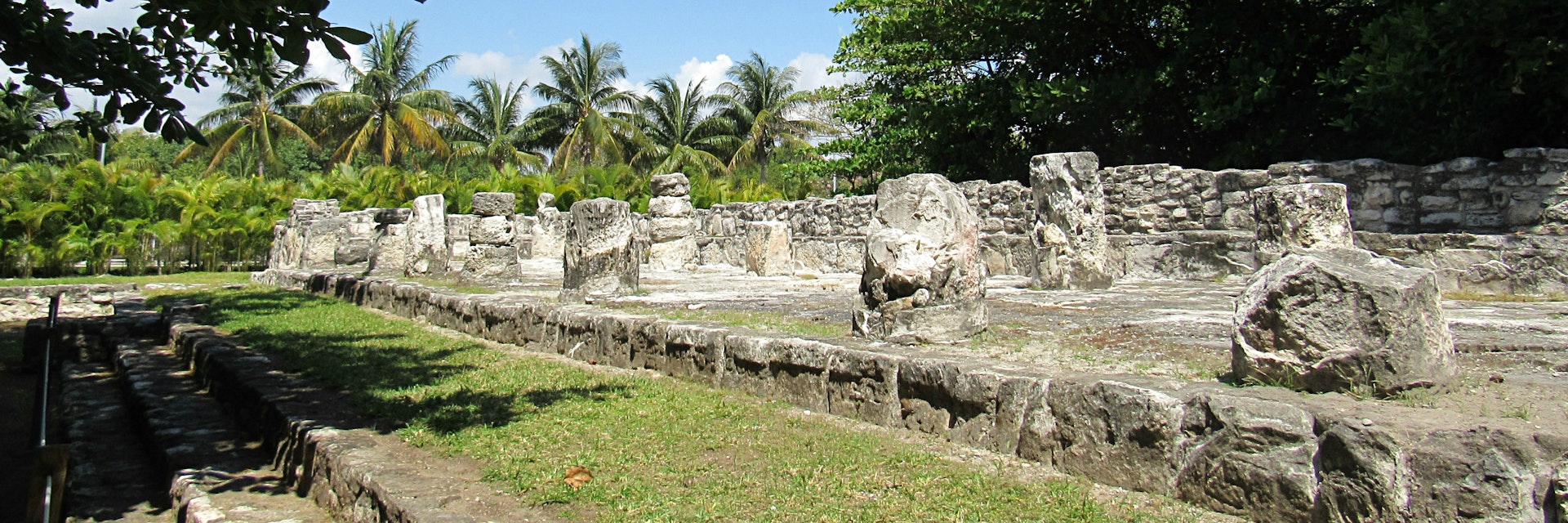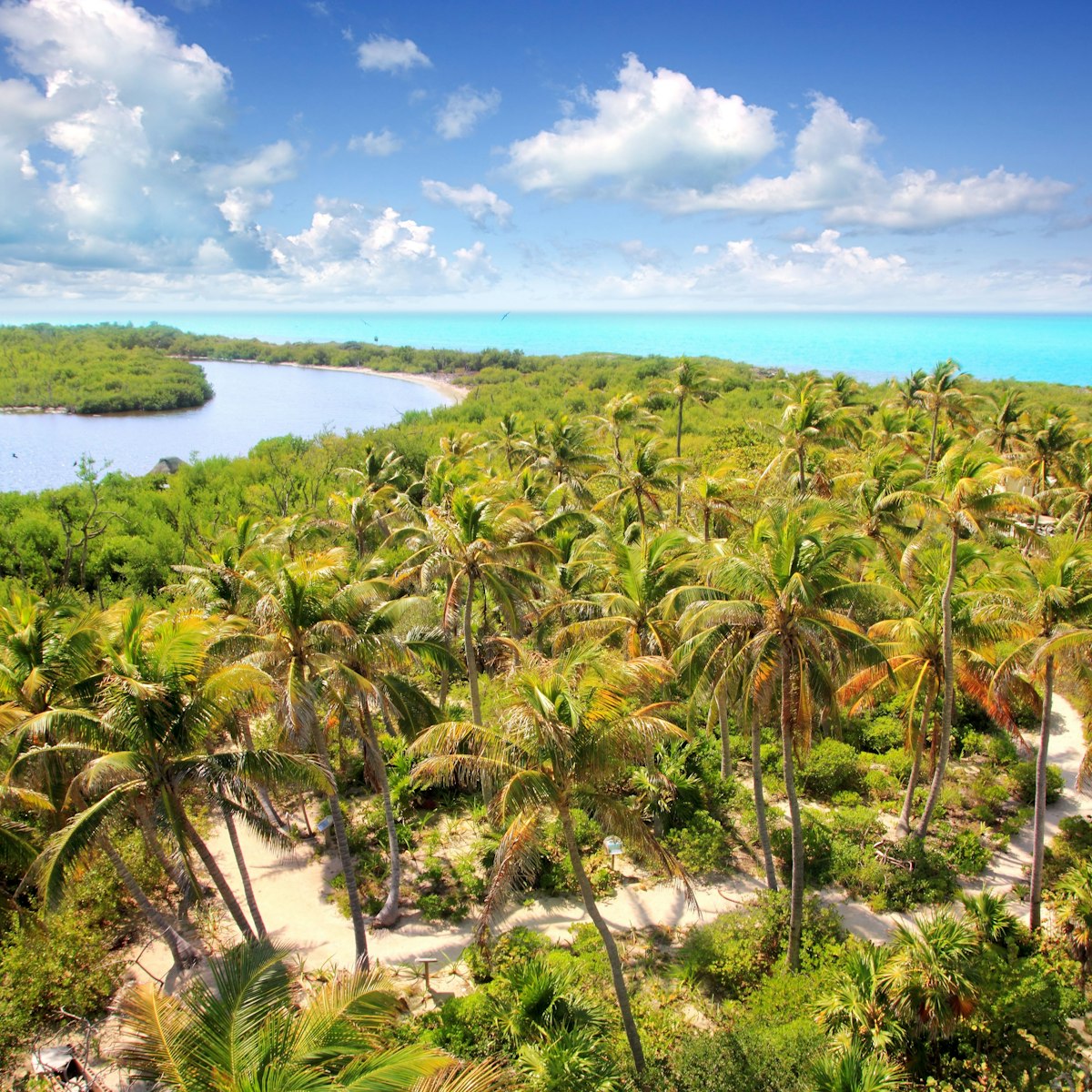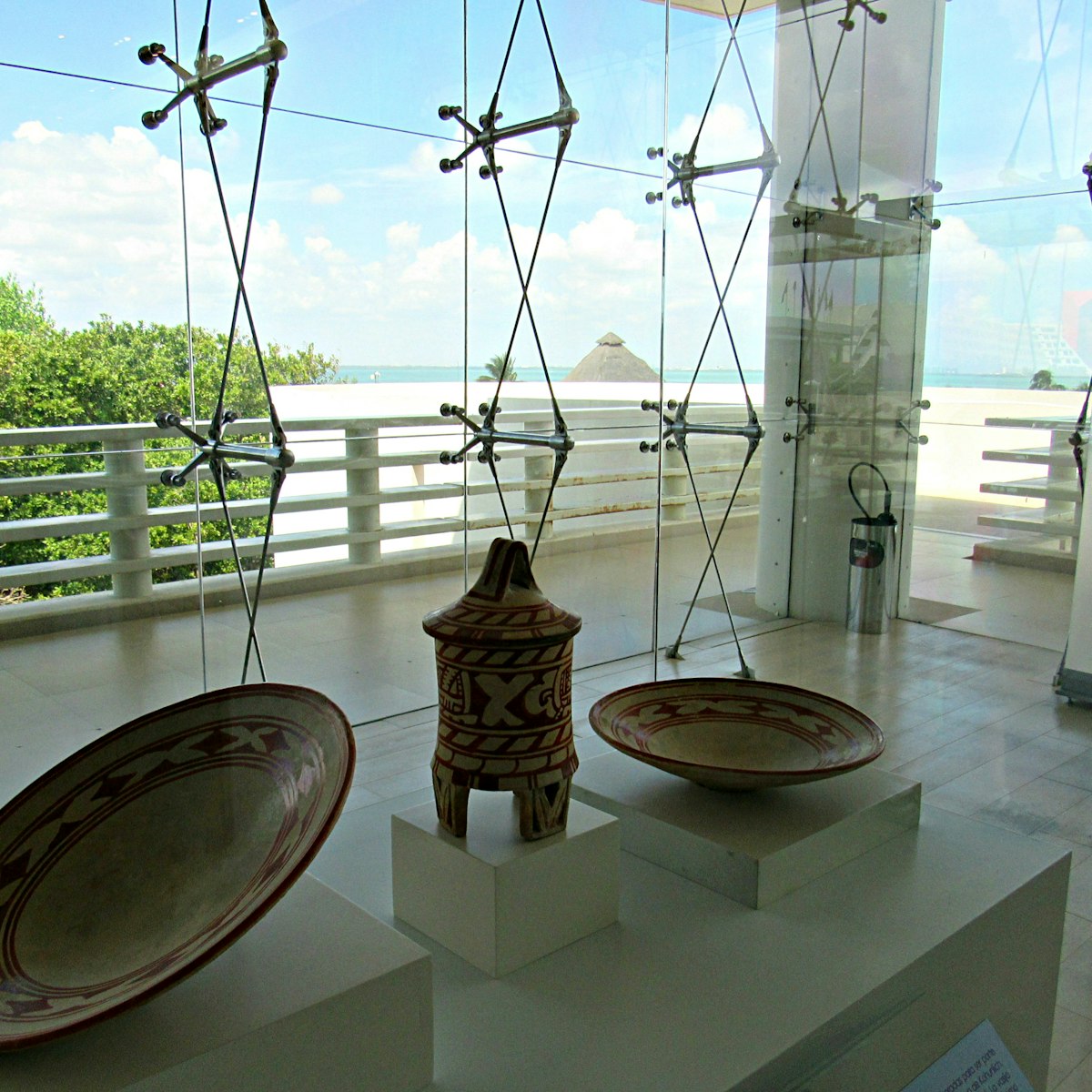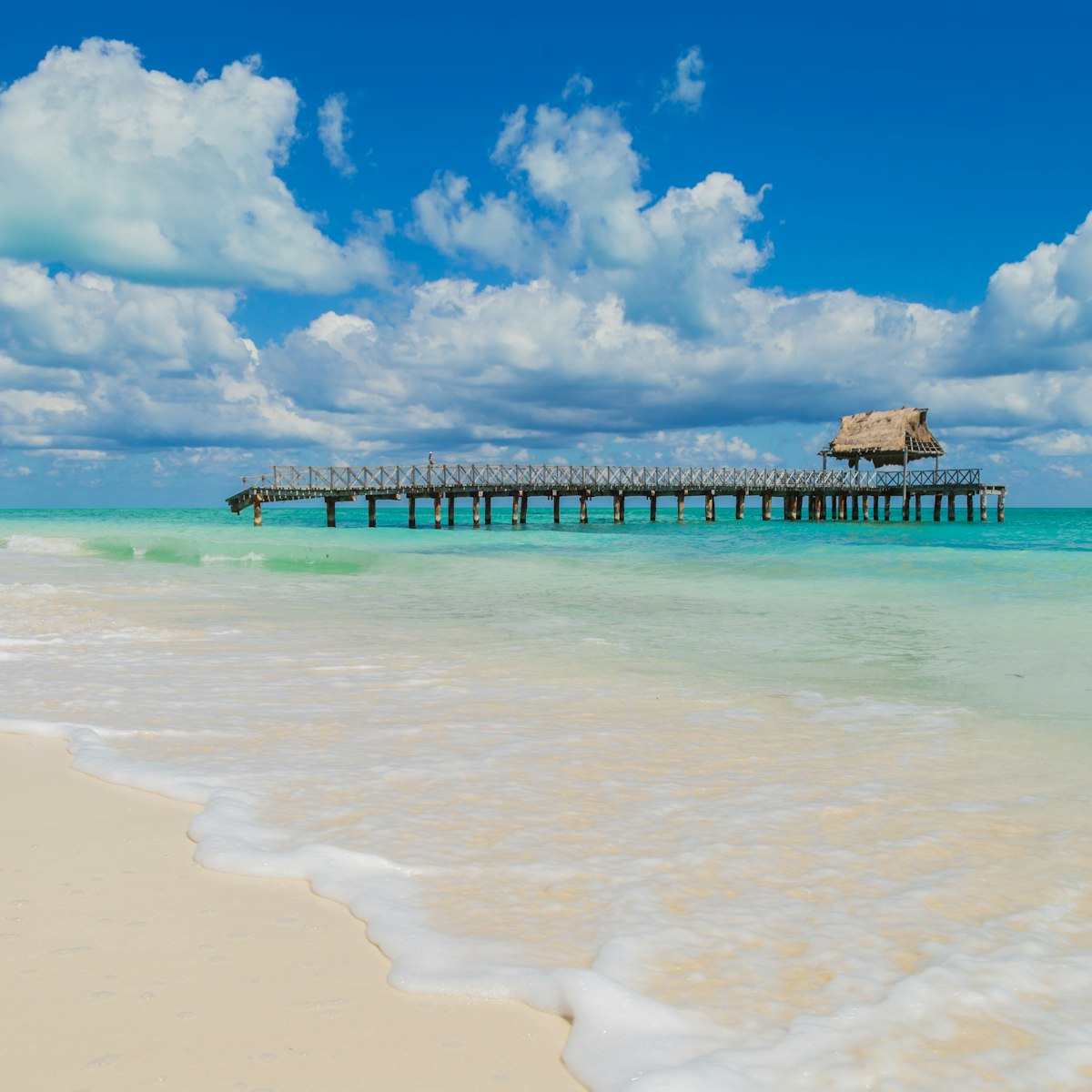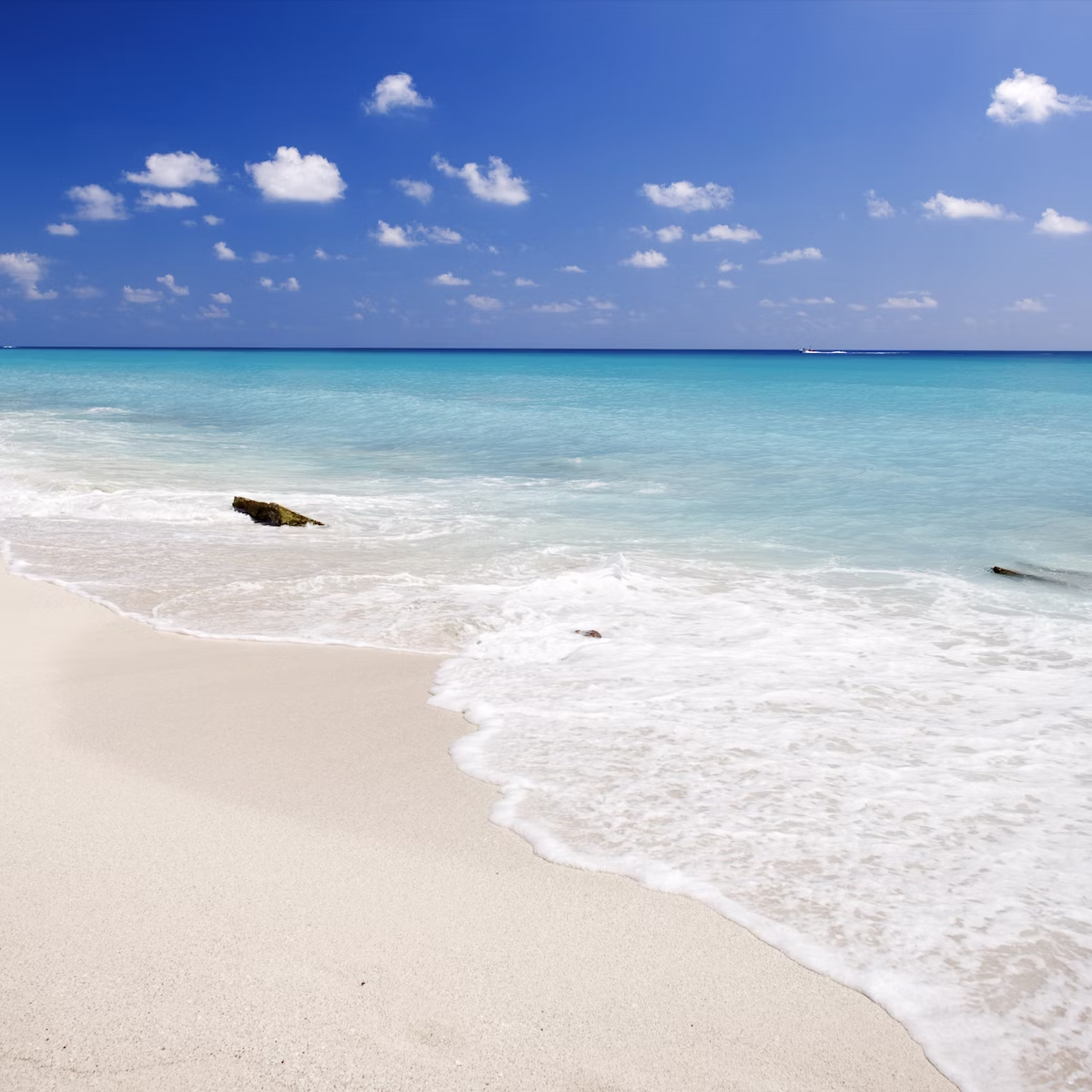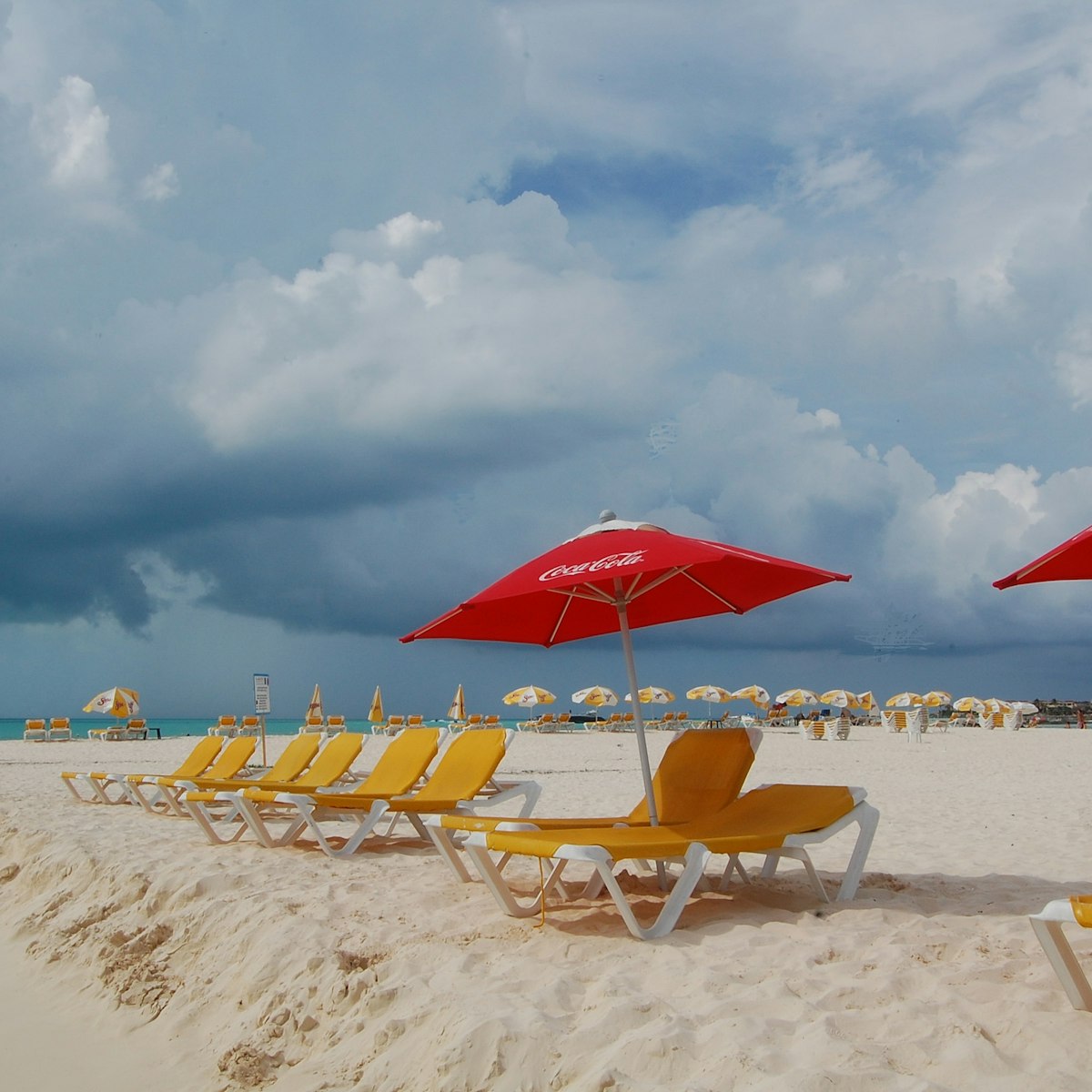You don't have to leave the Zona Hotelera to find Mayan culture in Cancún. Before the beach umbrellas, resorts, banana boats and Spanish conquistadors arrived, San Miguelito was a thriving city, a strategically placed trading center that controlled large parts of the present-day Zona Hotelera and beyond. Wandering the ruins is one of the top things to do in Cancún, and it's well worth dragging yourself away from the beach to explore.
San Miguelito today is a relatively small Mayan archaeological site, but there’s still something special about the ruins here, not least the juxtaposition of ancient structures with modern resort towers peeking out from behind the trees. Strolling under the thick jungle canopy, and passing remnants of residential platforms, palace-like edifices, and even a three-story pyramid, you can begin to imagine what life might have been like in this important coastal city. It's a great primer before visiting more imposing ruins dotted around the Yucatán peninsula.
Paired with a visit to the impressive onsite Museo Maya de Cancún, home to one of the region’s most important collections of Mayan artifacts, a trip to San Miguelito is a thought-provoking reminder of the people who walked these beaches before tourists and colonizers; it may even change the way you look at Cancún today.
San Miguelito History
A flourishing maritime community for many centuries, San Miguelito peaked between CE 1200 and 1350, when it was one of the most powerful settlements on the island of Cancún, growing to include the nearby site of El Rey. Today, the Zona Hotelera’s main boulevard divides the two archaeological sites. Access to both the Caribbean and Laguna Nichupté helped make San Miguelito a strategic port and regional powerhouse.
Yet, for reasons unknown, San Miguelito declined rapidly in the 14th century. The site was abandoned soon after the arrival of the Spanish in the mid-1500s, its last remaining population decimated by European diseases. San Miguelito remained virtually untouched until the early 1900s when American archaeologists Thomas Gann and Samuel Lothrop visited and created the first modern-day descriptions and site maps. The Mexican government only started excavating and restoring the site in the 1970s and work continues today.
Meaning of San Miguelito
San Miguelito means ‘little Saint Michael’, a reference to the name of the coconut ranch that operated on the site from 1950 to 1970. The original name of the Mayan city remains unknown, though Nizuc is often mentioned as the pre-Spanish name for the promontory on which Cancún now stands.
How to navigate San Miguelito
The entrance to San Miguelito is through the contemporary Museo Maya de Cancún. Passing through the museum’s stark white lobby and into its gardens, you’ll find a winding jungle path that leads to the archaeological site. The ruins themselves sit on the west side of the 80-hectare property.
The site is divided into four groupings: North Complex, Chaak Palace Grouping, Dragon Complex and South Complex. A pleasant path connects them in a north-south line, shaded by towering trees and thick tropical plants. Starting at the first juncture in the path, turn right (north) to the North Complex, then double-back to see the Chaak Palace Grouping, Dragon Complex and South Complex. To exit, head back the way you came. San Miguelito is small - most people find an hour is plenty of time to visit it.
San Miguelito’s Principal Groupings
The North Complex was a residential area, with five raised platforms serving as foundations for thatch-roofed homes. Although the houses themselves have long since disappeared, more than 20 gravesites were found beneath the foundations; it was common practice among the ancient Maya to bury loved ones under family homes. Look for the two circular enclosures, thought to have been used for food preparation and storage.
The structures in the Chaak Palace Grouping served administrative functions. The most intact edifice is the namesake palace, which sits on the north side of a small plaza. An impressive 30-meters-long, it has well-preserved walls and 17 columns that once held up a flat wooden roof, a Mayan architectural feature also found at Tulum and Xel-Há, and an indicator of the strong ties among these coastal communities. If you look closely, you’ll see original stucco on some of the columns. The main stairway also contains stone etchings of Chaak, the Mayan god of rain.
The Dragon Complex is made up of several small structures, mostly alters, shrines and residential platforms that have not yet been fully excavated or restored. The most significant finding is a wall with remnants of a mural depicting fish and turtles – look for it under a protective awning. This grouping was named after two stone sculptures that were found nearby during the construction of the main boulevard along the Zona Hotelera.
The South Complex is the most impressive grouping of the site. Arranged around a central plaza are several residential platforms, altars and an east-facing palace with interior columns and two chultuns (stone cisterns used to catch rainwater). Just south of the palace is San Miguelito’s imposing pyramid, an 8m-tall structure crowned by a temple; its stairway faces south towards the El Rey ruins further along the strip.
Things you should know
- There are no tour guides available onsite, so you'll need to explore under your own reconnaissance.
- Placards describe the importance and function of the site’s main structures, in Spanish and English.
- Climbing on and entering San Miguelito’s structures is not permitted; respect the barriers and ‘do not enter’ signs to help prevent further erosion of the buildings.
- Bring insect repellent, especially for late afternoon visits, when mosquitoes are most active.
Tickets and other practicalities
Admission to San Miguelito Ruins costs M$80, which includes access to the adjoining Museo Maya de Cancún. Tickets can only be purchased onsite. The ruins are open year-round Tuesday to Sunday; the last entry is at 4:30pm.
How to get to San Miguelito
The San Miguelito site is in the Zona Hotelera in the same complex as the Museo Maya de Cancún, near the Omni hotel complex. The R-1, R-2 and R-27 buses (M$12) stop in front. Taxis also are easy to flag down in Cancún–just agree upon a price before getting in.
Parking at the museum is free but the small lot often fills up by mid-morning. If there are no spots, try the free lot at Playa Delfines, about 1.6km south; otherwise, head to the pay lot at Plaza Kukulcán, a shopping mall about 4.5km north of the ruins.
Finally, if you’re staying nearby, consider walking; the Zona Hotelera is lined with sidewalks, though there's not a lot of shade.
